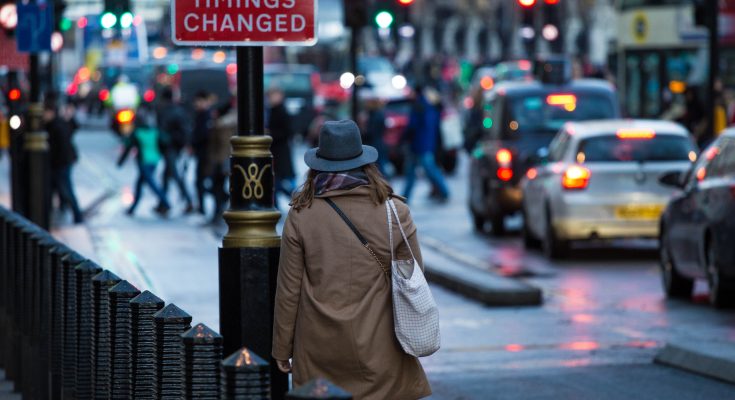Pollution from the surface of London’s roads is posing a significant risk to rivers in the capital, a pioneering new study has found.
Research funded by City Hall, Transport for London and the Environment Agency found that all of the roads involved in the study have the potential to damage local rivers. Modelling by researchers from Thames21 and Middlesex University has shown that roads where heavy goods vehicles (HGVs) regularly apply their brakes are often the worst affected, usually around junctions, roundabouts and traffic lights.
The modelling for this project applied to the major roads in outer London for which Transport for London have modelled or observed data around vehicle movements. This equates to nearly 40,000km, or 75% of London’s major roads. All the roads assessed have been found potential for damaging river health, but the most polluting roads identified in the study included Junction of North Circular (A406) and Abbey Road, Alperton; North Circular at Chingford; slip road to the A40 (B456) by Ealing Sports Ground; and Jenkins Lane, Beckton.

This is the first time that dedicated research has been carried out to identify sources of this specific type of pollution, known as road run-off. Road run-off occurs when pollutants that settle on the surface of the road – such as residue from oil spills, as well as tyre and brake wear from vehicles – build up during dry weather and are then washed into rivers and streams when it rains. The problem is likely to increase with the effects of a changing climate.
Toxic metals, hydrocarbons found in fuel and other pollutants washed into water pose a significant threat to river health. Road run-off can carry over 300 pollutants, causing short and long-term damage including killing fish and even discolouring water turning the river water black.
Christina Calderato, TfL’s Head of Transport Strategy and Planning, underlined that her agency was working with others to reduce the impact of runoff from roads. This study will help the agency to work out where they and the other authorities responsible for roads in London can intervene to make runoff cleaner and improve water quality in rivers for everyone. According to Simon Moody, Environment Agency Area Director for London, the main authorities responsible for reducing the impact of London’s road network on the water environment are local authorities and transport operators.
Many of London’s rivers are polluted, with only one of London’s 41 bodies of water (the Carshalton Arm, source of the River Wandle) classed as ‘good’ under the EU Water Framework Directive. The River Brent, spanning almost 18 miles, and the River Lea, spanning 42 miles, are likely to be the worst affected by polluted road run-off.
“Pollution from roads is one of the least understood and most complex forms of river pollution,” emphasised John Bryden, Head of Improving Rivers at Thames21. “This pioneering research can finally help us identify the worst roads, and then start taking action to deal with this urgent problem.’
Mayor of London, Sadiq Khan, acknowledged that the report provided clear evidence that pollution from the surface of London’s roads is posing a significant risk to our rivers. “We’re working with partners to find solutions that prevent water contamination, but the Government must step up to provide the Environment Agency and highways authorities with the appropriate funding for these measures to properly protect the capital’s rivers,” he said.
Whilst the Mayor has no direct powers over water quality, his team at City Hall has been working with partners on this new research to help drive action, including using sustainable drainage – such as planting vegetation – and creating wetlands to help filter out the worst pollutants before they reach our rivers. These solutions also provide other benefits including reducing flood risk, greater biodiversity and improving air quality.
Image by Alexandre Godreau


